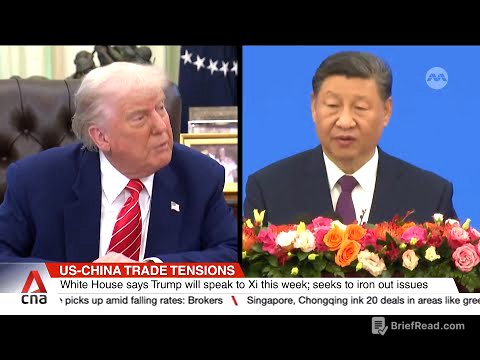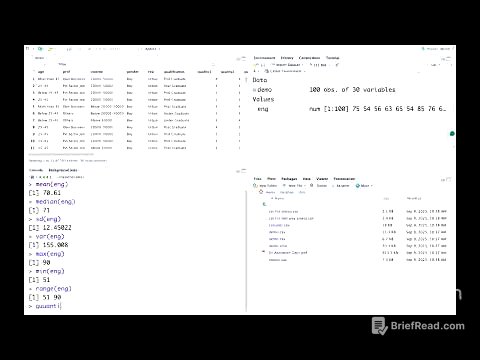TLDR;
This video provides an overview of the PARA (Projects, Areas, Resources, Archives) system, a method for organizing digital information to enhance productivity. It was popularized by Tiago Forte as a way to build a "second brain." PARA categorizes information based on its actionability, not its source, making it easier to find and use. The system is simple, portable, and scalable, but requires consistent maintenance and may not fit everyone's workflow perfectly.
- PARA is about organizing information by actionability, not source.
- The four categories are Projects, Areas, Resources, and Archives.
- PARA is simple, portable, and scalable.
Introduction to the PARA System [0:00]
The PARA system is a unique approach to productivity that focuses on organizing information rather than directly managing tasks. Introduced by Tiago Forte around 2017, it's closely linked to the concept of building a "second brain," which is a philosophy of organizing information. The PARA method serves as an operating system for achieving this, though other methods exist. Forte popularized the idea of outsourcing thinking and memory to a digital system. The PARA method is designed to be a universal way to organize digital information by actionability, not by source or format. This ensures that all stored information is relevant, useful, and actionable.
The Four Categories of PARA [2:33]
The PARA system consists of four categories: Projects, Areas, Resources, and Archives, organized from most to least actionable. Projects are short-term efforts with clear goals and deadlines, representing day-to-day tasks. Areas of responsibility have no end date and require constant upkeep, such as health or finances. Resources are a library of interesting and useful items for future use. Archives store inactive, completed, or abandoned projects and areas.
How to Implement PARA [5:33]
Implementing PARA involves capturing information from various sources and deciding where it belongs based on its intended use. Information supporting short-term goals goes into Projects, while items related to ongoing responsibilities go into Areas. Interesting or potentially useful items are stored in Resources, and completed or abandoned items are archived. Information can flow between categories; for example, resources can become inputs for projects, and projects can evolve into areas of responsibility. Regular reviews are essential to maintain organization, focusing on "just in time" organization, where you organize the parts you're actively working on.
Benefits of the PARA System [9:06]
The PARA system offers several benefits, including its simplicity, action-oriented approach, portability across digital platforms, and scalability. With only four categories, the system is easy to remember and apply. It prioritizes immediate relevance and actionability, ensuring that the most important items are easily accessible. PARA works across various platforms and scales effectively for both personal and business use. It makes it easy to find what you need when you need it.
Potential Drawbacks of PARA [11:30]
Despite its advantages, the PARA system has some drawbacks. The lack of a standard procedure requires conscious effort to move information as its actionability changes. Some users find the four categories insufficient for their needs and add subcategories. Overlapping items can make categorization difficult, and the lack of clear instructions can be paralyzing for some. There is a learning curve associated with trusting the system and effectively organizing information.
Workflowy Demo and Final Thoughts [13:47]
The video demonstrates how to implement PARA in Workflowy, a note-taking application. The four main areas are set up as top-level bullets, with subcategories added to Areas for better organization. The PARA system originated from Tiago Forte's need to organize medical information related to a chronic illness. PARA is a simple, process-oriented approach that can be combined with other productivity techniques. It enhances visibility and transparency by collecting and organizing resources, making them available for future use. The PARA methodology is highly rated for its simplicity, portability, and compatibility with other productivity systems.




![[ShellyPundao] Real Life RELATIONSHIP 🤍](https://wm-img.halpindev.com/p-briefread_c-10_b-10/urlb/aHR0cDovL2ltZy55b3V0dWJlLmNvbS92aS9nZXRLNXd2M1hYNC9ocWRlZmF1bHQuanBn.jpg)




